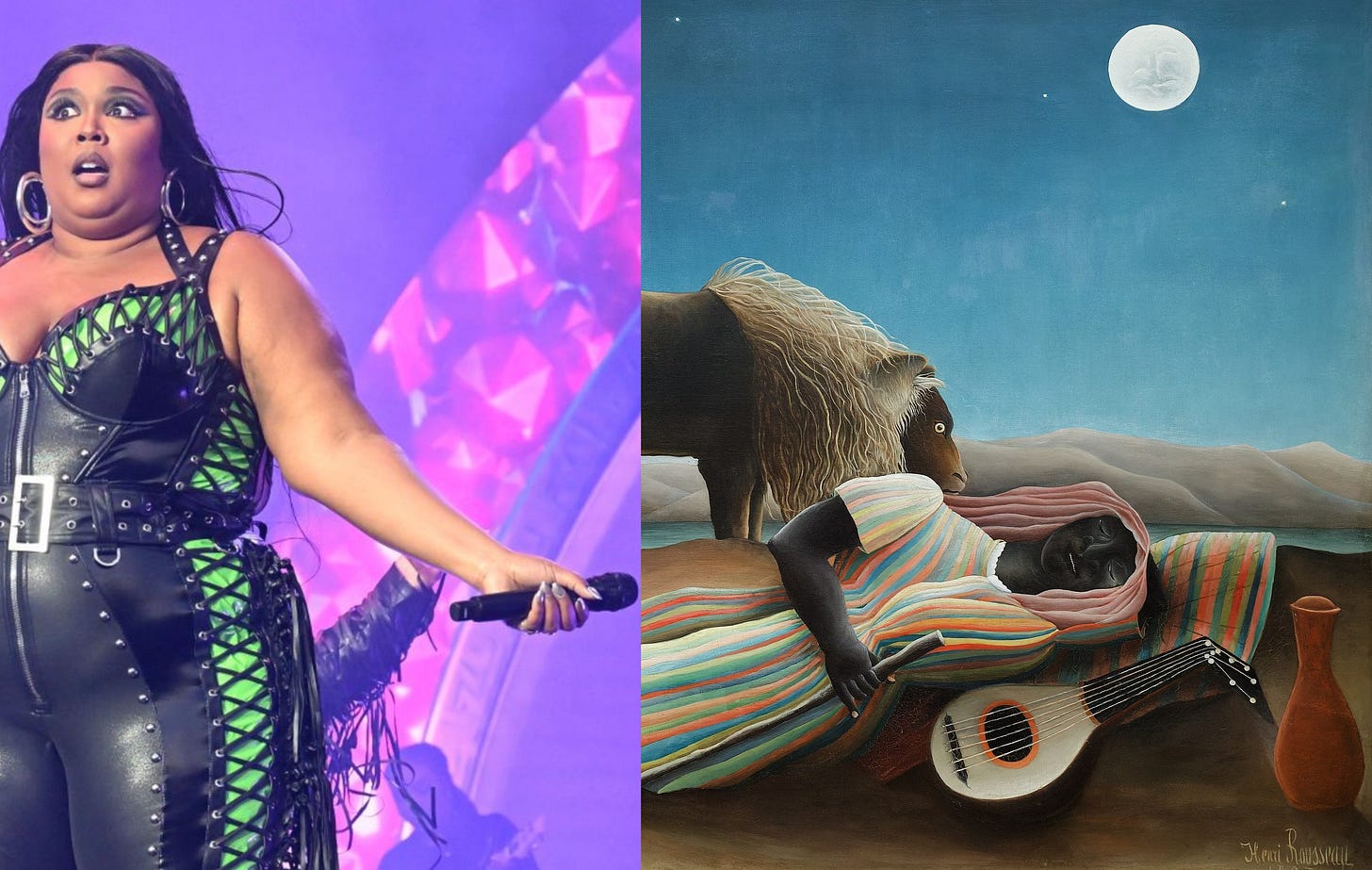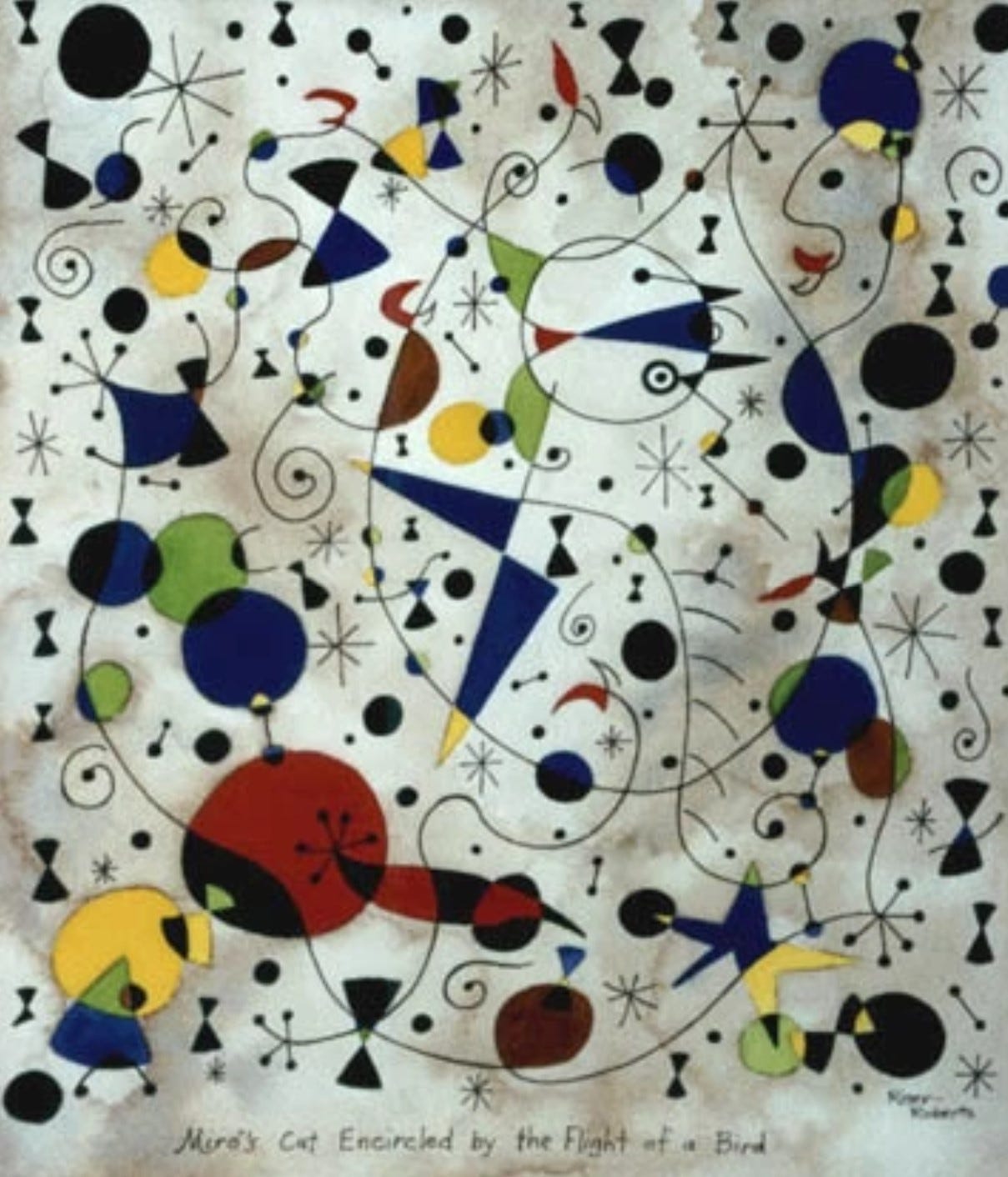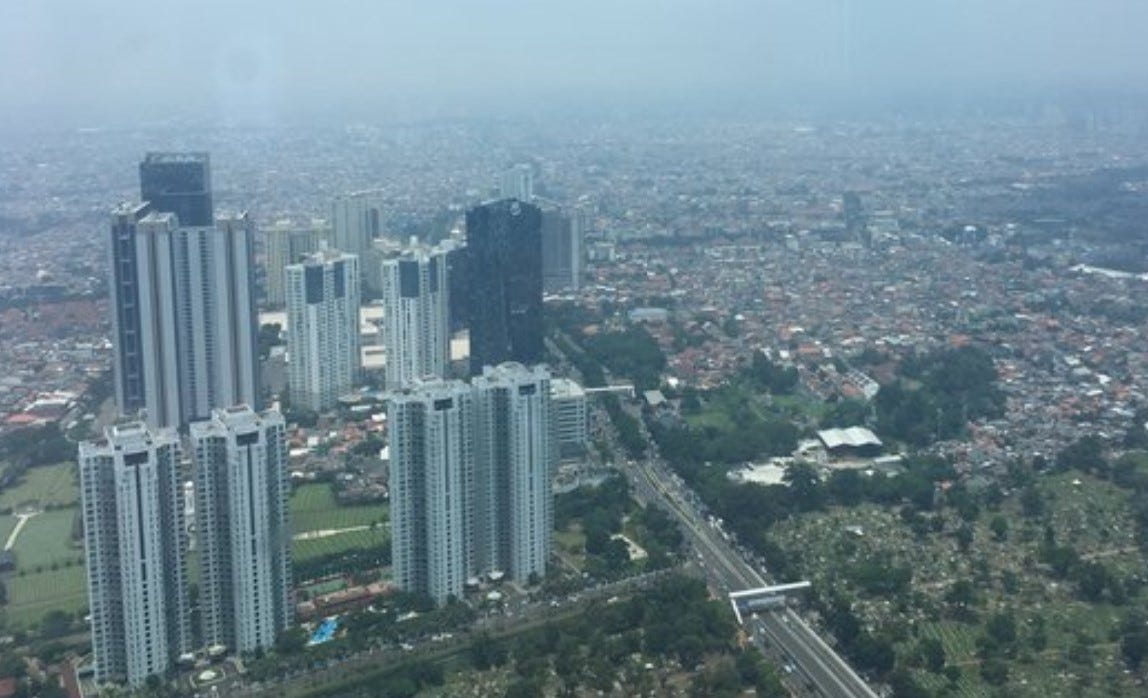Lizzo and Rosseau images copped from the internet and used without permission
Special big thanks to my first two paid subscribers, and Also thanks to the ongoing support through Buy Me of a Coffee of
Before we talk of ugliness we must talk of beauty. For the purpose of this essay beauty is defined is defined as any object, system, or representation, that contains order such as bilateral symmetry, harmony with at least a somewhat linear and/or hierarchical relations among it’s elements, human scale and proportion, and what mathematicians call elegance, which is similar to Occam’s razor that it does not contain unnecessary parts. Note contrary to some popular definitions of ugliness this not a criticism of all forms of modern art, or art from non western cultures. The surrealist paintings of Miro,
and the Gamelan music of Bali and Java are beautiful under the definition given above.
Nor is it technical skill for the sake of technical skill as seen in kitsch Rococo art. The artist Rosseau was not technically talented yet he managed to produce works of great beauty. Finally beauty is not to be confused with merely decorative or “affirming” art whose purpose is to produce only vapid happiness or worse no reaction at all. A beautiful work can be deeply sad, we see this often in classical music, such as funeral marches, requiems, and nocturnes with elegiac beauty.
Beyond this technical definition of beauty, as the old saw goes “we know it when we see it,” whether it is a Redwood forest or a masterpiece in the arts, it produces a non corny deeply moving feeling of awe, and is capable of changing a person’s life in a manner similar to a religious conversion. Note to even understand beauty exists at all, one must be capable of making judgments, and understand that a hierarchy of beauty down to ugliness exists. Some words we use to describe beauty would include harmonious, symmetrical, lyrical, fluid, effortless, profound, deep, moving.
So what then of ugliness? Ugly objects, systems, or representations are continually discordant with no resolution, muddy colors or drab greys, browns and rust colors, sloppy, lacking human proportion, overly ornamented, chaotic.
Random image of Jakarta found on Redit and used without permission
The effect of ugliness on the psyche is one of anxiety, and/or boredom. In order to sell people on ugliness you must first disable their ability to make aesthetic judgments which are often rooted in wisdom traditions like Christianity, Taoism, Buddhism, Hinduism, etc, etc. Arguably western culture starting with the enlightenment was the first culture to reject having any religious scaffolding at all. While this speeded up technical progress it also promoted cultural relativism with the idea of a marketplace of ideas. In a marketplace ideas individual choice is valorized above the idea of some ideas inherently having more worth than others. You can see where this would lead to ideas like “beauty is in the eye of the beholder.” Once the idea of taste and discernment was vanquished by the marketplace of ideas ugliness can be sold to us in 3 ways through promotion of the materialism of efficiency and technique, innovation, and postmodernism and equity. I will deal with all of these separately, in what I believe is roughly the chronological order they occurred in.
1. Efficiency and technique demand subordination of all other values to efficiency in production. In the materialist world view moral judgments are wholly subjective and thus should not act as impediments to making production more efficient. Note, capitalist, socialist, and communist economic theories share this wholly efficiency and technique oriented attitude towards production. The lack of moral restraint from a wisdom tradition is what allows for vast anonymous and dehumanizing skyscrapers, factories that are hideous polluting abominations, freight trains that are ponderous and ugly with no grace or style etc. Industrial commodities are almost always ugly, rack mount server computers would be an example.
2. In the aftermath of the horrors of trench warfare and mustard gas attacks and the first wide use of machine guns and tanks in WWI the arts underwent a convulsive shift to what we now call modernism. Under modernism there was to be no regard for beauty at all, the only criteria of judgment would be the individual artist’s level of innovation and how closely their art reflected the ugliness brought about by materialism and the triumph of technique and the horror of WWI. The Futurists were quit explicit in rejecting beauty and harmony in favor of art that portrayed industry, speed, metalic hues, and the destruction in wars. The modernist movement while producing occasional masterpieces by artists like Picasso and Miro, also produced in addition to ugliness a great instability in the art world with art becoming a series of trends and perhaps even mere fashion statements as expressionism was followed by DaDaism and Cubism, was followed by Futurism, was followed by Surrealism, was followed by Abstract Expressionism, etc, etc. In a world with no stable aesthetic criteria, the only constant is change for changes sake. This aesthetic revolution in turn moved out from the arts to the tech community, which worships “innovation” above all the things.
3. This brings us to the third stage of the uglification of western culture postmodernism and demands for “equity.” “Activist” demands for equity relate to ugliness through things like “normalizing” fat and trans people who simply don’t look like the sex they are trying to emulate. On a deeper level the idea of equity and inclusion means we are forbidden from making judgments about the ability or taste of other people. I mean Lizzo is just as valid and talented as Beethoven right you racist, sexist, fatphobe, homophobe? A”blinged” out gamer desktop isn’t gaudy and tacky is it? Who are you to judge?
Further the erosion of our capability to make judgments which I talked about in my last essay
The 3 levels of woke evil
Brief and late post, hey it’s late August. :-) Thanks to Phisto Sobanii for his ongoing financial support with his buy me a coffee subscription The 3 levels of woke evil 1. On the surface level of political policy and psychology, it allows people doing vile things like promoting wars and castrating children to claim they are “good people,” and that they must be accepte…
is part of the woke revolutionary strategy to demoralize normal people and make them doubt their ability to judge the ugliness of woke goblins on parade. A demoralized people are more easily conquered by “the revolution.”
Well that’s all pretty black pilling, is there any good news? In fact yes, people are getting increasingly tired of living in ugly environments and dealing with hideous woke goblins. Further living in an information age, we have all the beauty of the world to draw on to inspire us in our creations, from fractals, to instructions of how to carve an Orthodox icon, to mountain landscapes, to Gamelan music it’s all available at a click to inspire us in our creations. We also have fantastic tools available like 3D printers, computer controlled CAD, and cutting tools, etc. It’s easier to make something than it has ever been in human history. It’s a choice to create ugly things, an unnecessary choice. We here at Substack are IMO part of a nucleus of a new Renaissance 2.0. I would go as far as to say that many in our little group here will be remembered as heroes in creating a new culture of beauty beyond the ugliness imposed on us by technique, innovation without discernment, and woke and performance art.
If you would like to help a poor scrivener keep his virtual ink wells full, you can support me with a direct subscription here, or 3 other ways.
On Ko-Fi which is nice because they currently aren’t charging any fees
At Buy Me A Coffee with an individual donation, or a 2 dollar a month membership.
I also accept Paypal raven200@gmail.com








Really like this one Mr. Raven. Going to read your back catalogue. Keep it up and would it be possible to communicate over signal or some other means? I’m involved in a very interesting project you just might find to your liking. I can discuss on here if you’d prefer but much easier if we could actually speak
Can you link me to your responses?